When it comes to woodworking and construction, having the right tools is essential. Among the various tools used in these fields, the table saw holds a prominent position. It is a versatile and powerful tool that allows craftsmen and contractors to make precise cuts with ease. However, one crucial aspect that often goes unnoticed is the weight of a table saw.
Understanding the weight of a table saw is of utmost importance for practical purposes. Whether you’re a professional woodworker or a DIY enthusiast, knowing the weight of this tool can greatly impact your work efficiency and safety. The weight of a table saw affects its portability, stability, and overall performance, making it vital to consider before purchasing or using one.
In the upcoming sections of this article, we will delve into the details of how much a table saw weighs and why it is significant. We will explore the standard weight range for different types of table saws, discuss the factors that contribute to their weight, and provide valuable insights and tips for making informed decisions. So, let’s dive in and uncover the mysteries of table saw weight!
Understanding Table Saw Weight
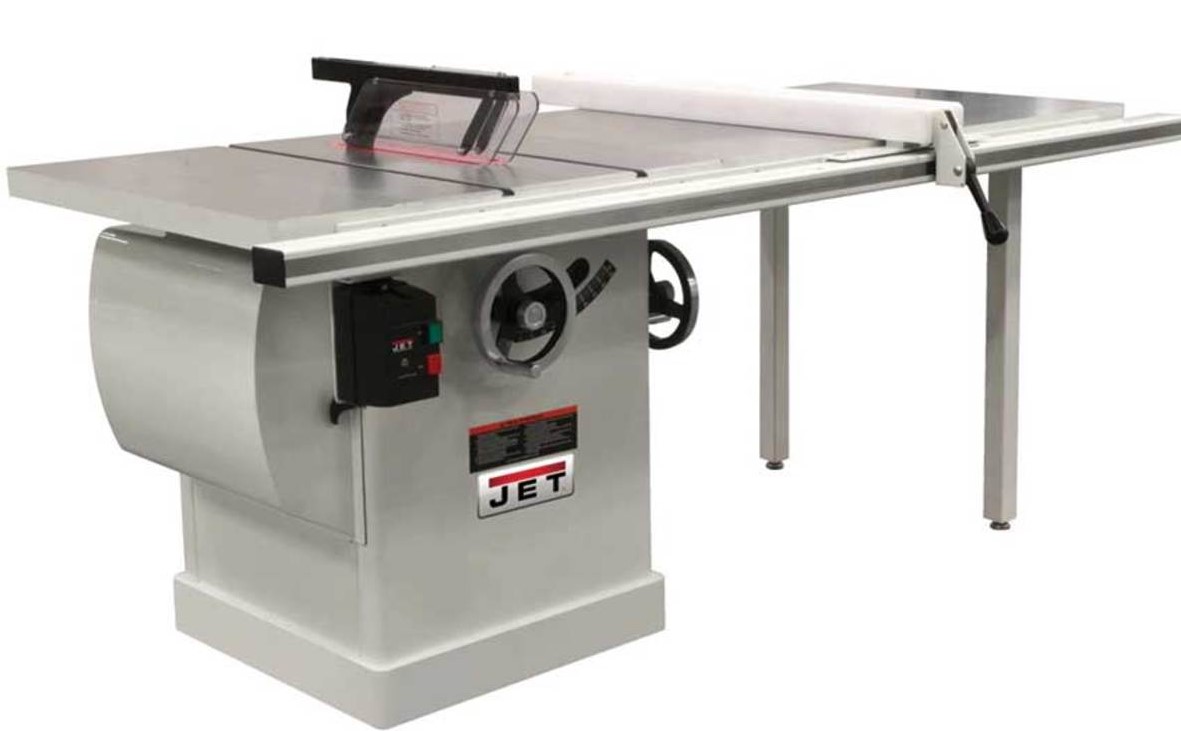
Table saw weight refers to the total mass of the tool, including its components and accessories. It is an important factor to consider when choosing a table saw because it has a direct impact on its portability, stability, and overall performance.
Portability: The weight of a table saw determines how easily it can be moved from one location to another. If you often need to transport your table saw to job sites or different areas of your workshop, a lighter weight model would be more convenient. On the other hand, if your table saw remains stationary in your workshop, a heavier and more stable option may be preferable.
Stability: The weight of a table saw plays a crucial role in its stability during operation. A heavier table saw tends to be more stable, reducing vibrations and improving the accuracy of cuts. This stability is especially important when working with larger workpieces or making precise cuts that require a steady platform.
Performance: The weight of a table saw can affect its performance in several ways. Heavier table saws often have more robust and powerful motors, allowing them to handle thicker or denser materials with ease. Additionally, the weight distribution of the table saw can impact its balance and the smoothness of its operation, ultimately influencing the quality of the cuts.
Factors contributing to table saw weight: Several factors contribute to the overall weight of a table saw. These factors can vary based on the design, size, and materials used in the construction of the tool. Here is an overview of the key contributors:
- Motor size and power requirements: The motor of a table saw, particularly its size and power, significantly impacts its weight. Larger motors with higher power outputs tend to be heavier but provide increased cutting capabilities.
- Table surface materials and dimensions: The material and dimensions of the table surface contribute to the weight of the table saw. Cast iron or steel surfaces are common due to their durability, but they can add significant weight. Larger table surfaces also contribute to increased weight.
- Fence and miter gauge construction: The quality and construction of the fence and miter gauge systems affect both the weight and the precision of the table saw. Sturdier and more accurate systems may add weight to the overall tool.
- Dust collection systems: Table saws often come with built-in dust collection systems to minimize debris. These systems can add weight to the tool, especially if they include larger dust collection ports or additional components.
- Stand or base design: The design and construction of the stand or base of the table saw influence its weight. Some table saws have integrated stands, while others may require a separate stand or bench. The material and structural design of the stand contribute to the overall weight.
Understanding these factors and their impact on table saw weight will help you make an informed decision when selecting a table saw that aligns with your specific needs and preferences.
Standard Weight Range for Table Saws
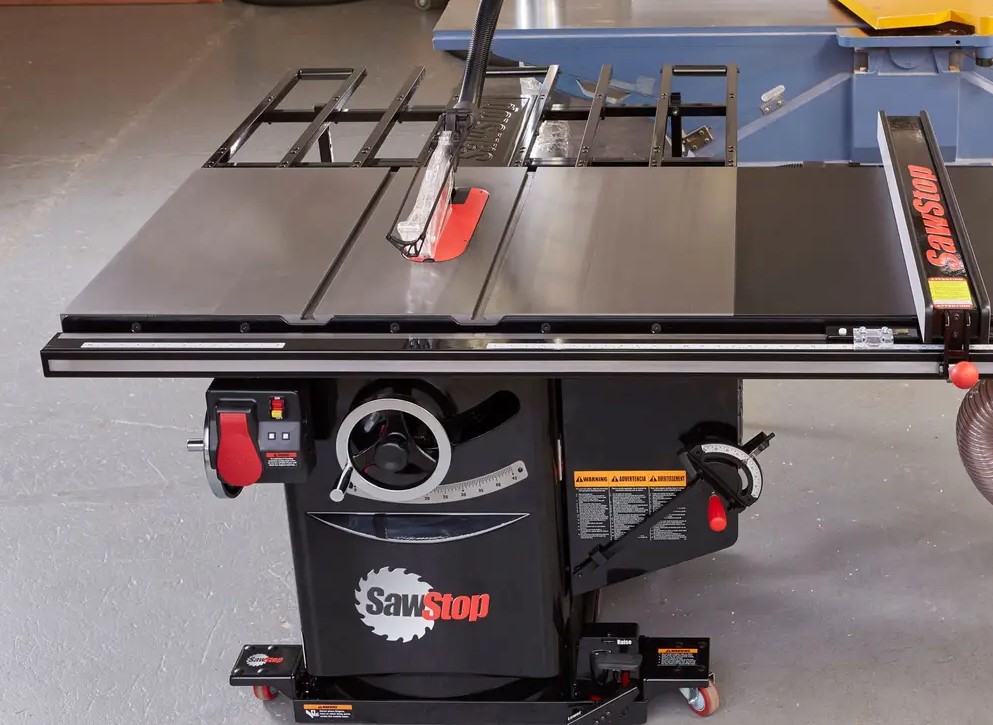
Table saws come in various types, sizes, and designs, which leads to variations in their weight. Understanding the standard weight range for different types of table saws can help you gauge what to expect when considering a specific model. Here, we will explore these weight ranges, discuss the factors that contribute to the variations, and provide statistical data on the average weights of popular table saw models.
Types of table saws:
- Benchtop Table Saws: Benchtop table saws are compact and designed to be placed on a workbench or a sturdy surface. They are generally lightweight and portable, making them suitable for jobsites or smaller workshops. The average weight of benchtop table saws typically ranges from 30 to 60 pounds (13.6 to 27.2 kilograms).
- Contractor Table Saws: Contractor table saws are larger and more powerful than benchtop models. They often come with a stand or mobile base for improved stability and portability. The weight of contractor table saws varies between 150 to 300 pounds (68 to 136 kilograms) on average.
- Cabinet Table Saws: Cabinet table saws are heavy-duty, precision machines designed for professional woodworking shops. They have robust construction, powerful motors, and large cutting capacities. Due to their size and enhanced features, cabinet table saws tend to be heavier, ranging from 300 to 600 pounds (136 to 272 kilograms) or more.
Factors influencing weight variations: The weight of table saws can vary based on several factors, including:
- Size and Design: Larger table saws with bigger cutting surfaces and more robust components generally weigh more than smaller, compact models. Cabinet table saws, with their extensive features and heavy-duty construction, tend to be the heaviest.
- Materials Used: The type of materials used in the construction of the table saw impacts its weight. Table saws with cast iron or steel components are typically heavier than those with aluminum or plastic parts.
- Additional Features: Table saws with additional features like built-in dust collection systems, upgraded fences, or advanced safety mechanisms may have added weight due to the inclusion of these components.
Average weight of popular table saw models: While the weight of table saws can vary from model to model, here is some statistical data on the average weights of popular table saws:
- Benchtop Table Saws: Average weight range: 30 to 60 pounds (13.6 to 27.2 kilograms).
- Contractor Table Saws: Average weight range: 150 to 300 pounds (68 to 136 kilograms).
- Cabinet Table Saws: Average weight range: 300 to 600 pounds (136 to 272 kilograms) or more.
Please note that these weight ranges are approximate and can vary depending on specific brands, models, and the inclusion of additional features or accessories.
Understanding the standard weight range for different types of table saws will assist you in selecting a suitable option based on your needs, portability requirements, and the available workspace in your workshop or job site.
Lightweight Table Saws
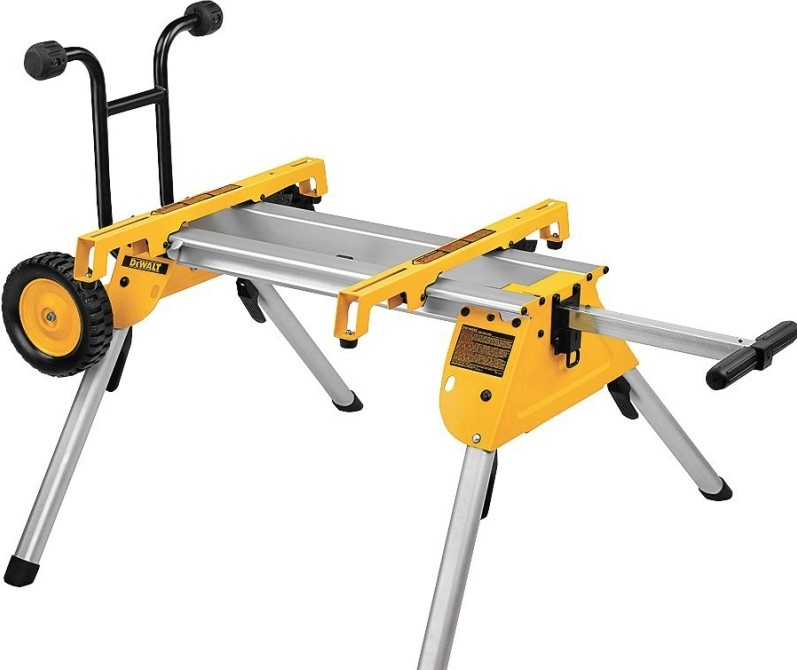
Lightweight table saws offer numerous benefits, particularly for those who require mobility or work in on-site locations. These portable and compact table saws provide convenience without compromising on essential features. In this section, we will highlight the benefits of lightweight table saws, discuss their average weight range, and provide examples of popular models with their key features.
Benefits of lightweight table saws:
- Portability: The primary advantage of lightweight table saws is their portability. With their reduced weight, these saws are easier to transport, whether it’s from one job site to another or simply moving around within a workshop. They are ideal for contractors, woodworkers on the go, or individuals with limited workshop space.
- Maneuverability: Lightweight table saws are typically designed for easy maneuverability. Their compact size and reduced weight make them more agile, allowing users to position and adjust the saw with minimal effort. This flexibility is especially valuable when working in tight spaces or navigating obstacles.
- Versatility: Despite their lighter weight, many portable table saws still offer a range of useful features and capabilities. These saws often come with adjustable fences, beveling options, and varying cutting capacities, allowing users to tackle a wide array of woodworking tasks.
Average weight range of portable and compact table saws: Portable and compact table saws generally fall within a specific weight range, prioritizing mobility without compromising stability. On average, lightweight table saws can weigh anywhere between 30 to 80 pounds (13.6 to 36.3 kilograms). Keep in mind that the weight can vary depending on the specific model and its included features.
Examples of lightweight table saw models and their key features:
- DEWALT DW745: Weighing around 45 pounds (20.4 kilograms), this compact table saw offers a durable, portable design. It features a 15-amp motor, a 20-inch rip capacity, a rack and pinion fence system for accurate cuts, and a convenient dust collection port.
- Bosch GTS1031: With a weight of approximately 52 pounds (23.6 kilograms), the Bosch GTS1031 is a highly portable table saw. It boasts a 15-amp motor, a 24-tooth carbide blade, a durable all-steel base, and an easy-to-use Smart Guard System for enhanced safety.
- Makita 2705X1: This lightweight table saw weighs around 65 pounds (29.5 kilograms) and offers excellent performance. It features a 15-amp motor, a large cutting capacity, an adjustable dual side guard system, and a tool-less modular blade guard assembly for efficient operation.
These examples represent popular lightweight table saw models known for their quality, portability, and features. However, it’s important to research and compare different models based on your specific requirements and preferences to find the best lightweight table saw that suits your needs.
Choosing a lightweight table saw can provide the flexibility and convenience needed for on-the-go woodworking tasks or working in environments where mobility is essential.
Heavy-Duty Table Saws
Heavy-duty table saws, such as contractor-grade and cabinet table saws, offer distinct advantages due to their heavier weight, robust construction, and enhanced features. In this section, we will explain the advantages of heavier table saws, discuss the weight range of contractor-grade and cabinet table saws, and provide insights into the weight distribution and construction of these heavy-duty tools.
Advantages of heavier table saws:
- Stability: Heavier table saws provide superior stability during operation. The increased weight helps dampen vibrations, resulting in smoother and more accurate cuts. This stability is particularly valuable when working with larger workpieces or undertaking intricate woodworking projects that demand precision.
- Cutting Performance: Heavy-duty table saws often come equipped with powerful motors and larger cutting capacities. The added weight contributes to the overall stability and power of the saw, allowing it to effortlessly handle dense or thick materials. This enables consistent and clean cuts, even in demanding woodworking tasks.
- Durability: Heavy-duty table saws are constructed using sturdy materials, such as cast iron or steel, which enhances their overall durability. These robust materials ensure the saw can withstand the rigors of professional use and remain resilient over time, making them a reliable choice for long-term woodworking projects.
Weight range of contractor-grade and cabinet table saws: Contractor-grade table saws typically fall within the weight range of 150 to 300 pounds (68 to 136 kilograms). These saws are designed to be portable but still offer substantial power and stability, making them suitable for contractors who need to transport the saw between job sites.
On the other hand, cabinet table saws are heavier and range from 300 to 600 pounds (136 to 272 kilograms) or more. These saws are characterized by their heavy-duty construction, precision features, and larger work surfaces. Cabinet table saws are typically stationary and designed for professional woodworking shops or dedicated workspaces.
Insights into weight distribution and construction of heavy-duty table saws: Heavy-duty table saws have a well-balanced weight distribution that contributes to their stability and performance. The weight is evenly distributed across the base, often with a substantial portion located in the base cabinet or stand, which enhances stability during operation.
These table saws typically feature robust components such as heavy-duty trunnions, strong fences, and durable motors that add to their weight. The use of cast iron or steel for critical parts, including the tabletop and extensions, provides rigidity and minimizes vibration, ensuring precise cuts.
The heavier weight of these table saws also contributes to their enhanced dust management capabilities. Many heavy-duty models come with efficient dust collection systems that help maintain a clean work environment.
Overall, heavy-duty table saws are designed to deliver exceptional stability, cutting performance, and durability. Their weight and construction provide a solid foundation for demanding woodworking tasks and professional applications.
Factors Affecting Table Saw Weight
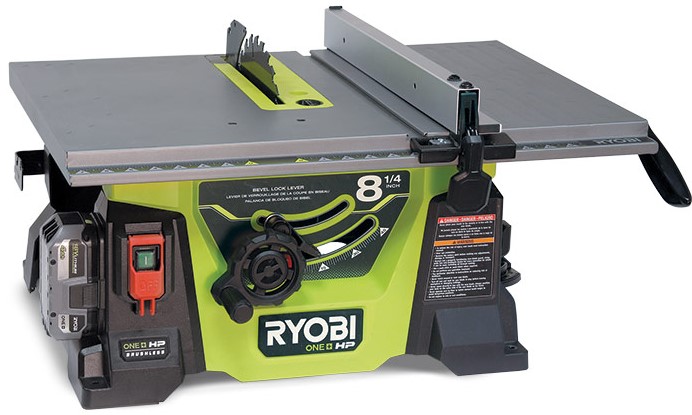
The overall weight of a table saw is influenced by various factors that contribute to its construction and functionality. Understanding these factors is essential when considering a table saw purchase. Here, we will discuss the significant factors that affect table saw weight, including motor size and power requirements, table surface materials and dimensions, fence and miter gauge construction, dust collection systems, and stand or base design.
- Motor Size and Power Requirements: The motor of a table saw is a crucial component that significantly impacts its weight. Larger motors with higher power requirements tend to add more weight to the overall saw. The size of the motor and its power output determine the saw’s cutting capacity and its ability to handle different types of materials. Higher-powered motors often result in a heavier table saw.
- Table Surface Materials and Dimensions: The material and dimensions of the table surface contribute to the weight of a table saw. Cast iron and steel are commonly used materials due to their durability and stability. These materials add weight but provide a solid and vibration-resistant work surface. Larger table surfaces also contribute to increased weight, as they require more material for construction.
- Fence and Miter Gauge Construction: The construction of the fence and miter gauge systems also affects the weight of a table saw. Sturdier and more precise fence systems, often made of heavy-duty materials such as steel or aluminum, may add weight to the overall saw. These robust components contribute to the accuracy and stability of the saw’s cutting operations.
- Dust Collection Systems: Table saws often come equipped with dust collection systems to help minimize the accumulation of sawdust and debris. These systems, including collection ports, dust chutes, and internal components, can add weight to the saw. Larger and more efficient dust collection systems may increase the overall weight of the table saw.
- Stand or Base Design: The design and construction of the stand or base of a table saw also influence its weight. Some table saws have integrated stands, while others may require a separate stand or bench. The materials used in the stand, such as steel or heavy-duty plastic, contribute to the weight. The design of the stand, including stability-enhancing features, can impact the overall weight of the table saw.
Understanding these factors will help you assess the weight of a table saw and its suitability for your specific needs. It’s essential to consider the balance between weight and desired features when choosing a table saw, as different users may prioritize portability, stability, or cutting performance differently.
Importance of Weight Considerations
Considering the weight of a table saw is crucial when making a purchasing decision, as it has significant implications for transportation, setup, maneuverability, and overall usability. In this section, we will explain the importance of weight considerations, discuss how weight affects various aspects of using a table saw, and provide practical tips for evaluating weight based on individual needs and work environments.
- Transportation: The weight of a table saw directly impacts its portability. If you frequently need to transport your table saw between job sites or different areas of your workshop, a lighter weight model is preferable. A lighter saw is easier to lift, load into a vehicle, and carry around, minimizing the physical strain and making transportation more convenient.
- Setup: When setting up a table saw, its weight affects the ease and efficiency of the process. A lighter table saw is generally quicker and simpler to assemble and position. On the other hand, heavier table saws may require additional effort and assistance during setup, especially if they have a separate stand or a larger footprint.
- Maneuverability: The weight of a table saw impacts its maneuverability during operation. A lighter table saw is easier to move and adjust, allowing for quick positioning and alignment. This agility becomes particularly valuable when working in cramped spaces or when frequently repositioning the saw to accommodate different workpieces or cutting angles.
- Evaluating Weight for Individual Needs: When evaluating the weight of a table saw based on your individual needs and work environment, consider the following practical tips:
- Assess Portability Needs: Determine whether you need a highly portable table saw for frequent transportation or a more stationary saw for a dedicated workshop setup.
- Consider Workspace Limitations: Evaluate the available space in your workshop or job site. If space is limited, a lighter table saw may be more manageable and allow for better maneuverability.
- Account for User Strength and Mobility: Consider your own strength and mobility. If you anticipate difficulties in lifting or maneuvering heavier equipment, prioritize a lighter table saw that aligns with your physical capabilities.
- Evaluate Job Site Requirements: If you primarily work on job sites, assess the accessibility of those sites and the feasibility of transporting heavier equipment. Consider whether a lighter table saw would be more suitable for on-site applications.
- Balance with Stability: While lighter table saws offer enhanced portability, ensure that the weight does not compromise stability. Look for a balance between weight and stability, especially when working with larger workpieces that require a solid and vibration-free cutting platform.
By considering these practical tips and evaluating weight based on your specific needs and work environment, you can make an informed decision when selecting a table saw that offers the right balance between portability, maneuverability, and stability.
Safety Considerations and Handling Tips
Safety is paramount when handling and moving table saws. Mishandling or improper lifting techniques can lead to injuries or accidents. In this section, we will address safety precautions related to handling and moving table saws, provide guidelines for proper lifting techniques and the use of assistive devices, and offer tips for transporting, storing, and securing table saws to prevent accidents.
Safety Precautions:
- Read the user manual: Familiarize yourself with the manufacturer’s instructions, safety guidelines, and recommendations specific to your table saw model.
- Wear appropriate protective gear: Always wear safety glasses, hearing protection, and proper clothing when operating or handling a table saw. Use push sticks or push blocks to maintain a safe distance from the blade.
- Ensure a clear workspace: Clear the area around the table saw of any obstacles, debris, or clutter that could interfere with safe operation or movement.
Proper Lifting Techniques and Assistive Devices:
- Bend your knees and use your leg muscles: When lifting a table saw, bend your knees, keep your back straight, and use your leg muscles to lift the weight. Avoid bending at the waist or relying solely on your back muscles.
- Use proper grip and hand placement: Maintain a firm grip on the table saw, keeping your hands in a comfortable position. Use both hands when lifting and carrying the saw to ensure control and stability.
- Use assistive devices: Consider using lifting aids, such as dollies or lifting straps, to help move heavier table saws. These devices can distribute the weight and provide additional support, reducing the strain on your body.
Transporting, Storing, and Securing:
- Secure the blade and accessories: Before transporting or storing the table saw, ensure that the blade is properly secured or removed. Secure any loose accessories, such as miter gauges or fences, to prevent damage or accidents during transportation.
- Use appropriate transport methods: If possible, use a dedicated table saw cart or a properly fitted vehicle with tie-down straps to secure the table saw during transportation. Avoid carrying the saw without proper support or placing it in a position where it may shift or fall.
- Store in a safe and accessible location: When not in use, store the table saw in a clean and dry area, protected from dust, moisture, and potential damage. Ensure it is placed on a stable surface or stored securely on a dedicated stand or bench.
- Lock and secure moving parts: If your table saw has wheels or a folding stand, ensure that the locking mechanisms are engaged when using the saw and that they are securely locked when not in use to prevent accidental movement.
By following these safety precautions and handling tips, you can minimize the risk of accidents or injuries when handling, moving, transporting, storing, and securing a table saw. Prioritizing safety ensures a secure working environment and promotes the well-being of yourself and those around you.
Comparison with Alternative Tools
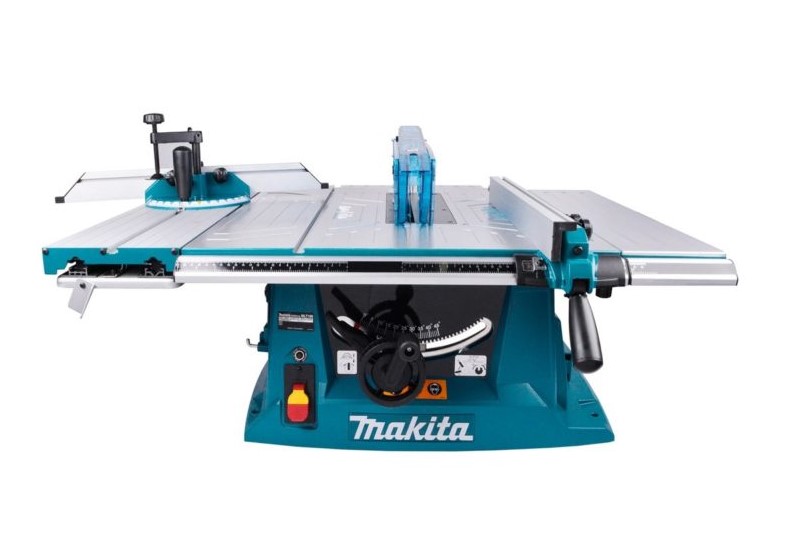
While table saws are widely used for woodworking tasks, there are alternative tools available that can perform similar functions. When considering weight, it’s helpful to compare table saws with these alternatives to assess their pros and cons. In this section, we will compare the weight of table saws with alternative tools, discuss the advantages and disadvantages of these tools based on weight considerations, and provide examples of alternative tools and their weight ranges.
Weight Comparison: Table saws generally have a moderate to heavy weight range depending on the type and size. When comparing them to alternative tools, here are some weight comparisons:
- Circular Saw: A circular saw is a handheld tool that can perform many cutting tasks similar to a table saw. Circular saws are generally lighter than table saws, with an average weight range of 7 to 15 pounds (3.2 to 6.8 kilograms), making them highly portable and suitable for on-site or small-scale woodworking.
- Miter Saw: Miter saws are commonly used for making precise crosscuts and mitered angles. They typically weigh more than circular saws but are still lighter than most table saws. The average weight range of miter saws is around 25 to 60 pounds (11.3 to 27.2 kilograms), depending on the size and features.
- Track Saw: Track saws offer precise and guided straight cuts, similar to a table saw. They are lighter than traditional table saws, with an average weight range of 10 to 20 pounds (4.5 to 9.1 kilograms). Track saws are often preferred for their portability and ease of use, especially for tasks that require mobility.
Pros and Cons of Alternative Tools:
Circular Saw:
- Pros: Lightweight and portable, suitable for on-site work, versatility in cutting different materials, lower cost compared to table saws.
- Cons: Limited cutting capacities, lack of stability and precision compared to table saws, requires additional support or jigs for longer cuts.
Miter Saw:
- Pros: Precise crosscuts and mitered angles, stability and accuracy in cutting, suitable for repetitive cuts, relatively lighter weight compared to table saws.
- Cons: Limited to specific types of cuts, less versatility compared to table saws, larger miter saws may still be heavy and less portable.
Track Saw:
- Pros: Precise straight cuts, portability and ease of use, ability to break down large sheets of material, lighter weight compared to table saws.
- Cons: Limited to straight cuts, requires a track or guide system for operation, less suitable for complex cuts or large-scale projects.
Examples of Alternative Tools and Weight Ranges:
- Circular Saw: Examples include the DEWALT DWE575 and Makita 5007MGA, weighing around 8.8 to 11 pounds (4 to 5 kilograms) on average.
- Miter Saw: Examples include the DEWALT DWS780 and Bosch GCM12SD, with weights ranging from 56 to 65 pounds (25 to 29.5 kilograms) on average.
- Track Saw: Examples include the Festool TS 55 and Makita SP6000J1, weighing around 9 to 11 pounds (4 to 5 kilograms) on average.
These examples represent popular tools used as alternatives to table saws, offering different features, capabilities, and weight ranges. When considering weight, it’s important to assess the specific requirements of your woodworking projects, mobility needs, and desired level of precision to determine the most suitable tool for your application.
Tips for Table Saw Maintenance
Regular maintenance of your table saw is crucial to ensure optimal performance, extend its lifespan, and maintain safety standards. By following these maintenance tips, you can keep your table saw in excellent condition. The maintenance aspects include cleaning and dust removal, lubrication and blade care, calibration and alignment, and safety feature inspections.
Cleaning and Dust Removal:
- Regularly clean the table saw surfaces, including the tabletop, fence, and miter gauge, to remove dust, debris, and residues. Use a clean, lint-free cloth or a soft brush to wipe away the buildup.
- Clean the dust collection system, such as the dust chute and collection bag or port. Ensure they are clear of clogs and debris that could hinder proper dust extraction.
- Pay attention to cleaning the blade and blade guard. Remove any sawdust or resin buildup to maintain cutting efficiency and prevent blade damage.
Lubrication and Blade Care:
- Lubricate the moving parts of the table saw, such as the trunnions, gears, and pivot points, as recommended by the manufacturer. Use appropriate lubricants to prevent friction and ensure smooth operation.
- Check the blade for any signs of wear, dullness, or damage. Replace the blade if necessary to maintain clean and precise cuts. Follow proper blade changing procedures and always unplug the saw before handling the blade.
- Adjust the blade height and tilt mechanisms as needed. Refer to the user manual for specific instructions on adjusting these settings for accurate cuts.
Calibration and Alignment:
- Regularly check and calibrate the table saw to ensure accurate and square cuts. Use a reliable square or a precision measuring tool to verify that the blade is perpendicular to the tabletop.
- Check and adjust the fence for parallel alignment to the blade. This ensures consistent and accurate rip cuts. Follow the manufacturer’s instructions for fence adjustment procedures.
- Verify that the miter gauge is calibrated correctly and that the stops and angles are accurate. Adjust as needed to maintain precise angled cuts.
Safety Feature Inspections:
- Periodically inspect the safety features of the table saw, such as the blade guard, anti-kickback pawls, and riving knife. Ensure they are in good working condition, properly aligned, and functioning as intended.
- Check the on/off switch and emergency stop button to ensure they are operating correctly. Replace any damaged or faulty safety components immediately.
- Inspect the power cord and plug for any signs of wear, fraying, or damage. If necessary, replace them to avoid electrical hazards.
Regularly following these maintenance tips will help you maintain the optimal performance, accuracy, and safety of your table saw. Always refer to the user manual for manufacturer-specific maintenance instructions and safety guidelines.
Conclusion
Understanding the weight of a table saw is crucial for woodworkers and contractors alike. In this article, we have explored the importance of knowing the weight of a table saw and its impact on practical purposes. We have discussed various factors that influence table saw weight, including motor size and power requirements, table surface materials and dimensions, fence and miter gauge construction, dust collection systems, and stand or base design.
By considering these factors, individuals can make informed decisions when choosing a table saw that aligns with their specific needs and work environments. The weight of a table saw affects its portability, stability, maneuverability, and cutting performance. Whether you prioritize mobility for on-site applications or seek stability and precision for professional woodworking, weight considerations play a crucial role in finding the right tool.
Remember to assess your portability requirements, workspace limitations, and personal strength when evaluating table saw weight. By understanding the pros and cons of alternative tools and following proper maintenance practices, you can optimize the performance, longevity, and safety of your table saw.
In conclusion, knowing the weight of a table saw empowers you to make well-informed decisions and select a tool that suits your specific woodworking needs. Consider weight as one of the essential factors alongside other features and functionalities when choosing a table saw, and always prioritize safety in your woodworking endeavors.